Pan-American Exposition, 1901
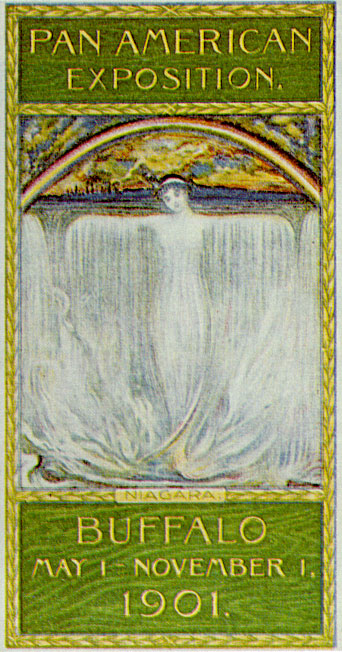
The Pan-American Exposition was held from May 1 to November 2, 1901, located on 342 acres in part of Delaware Park in Buffalo, New York. Nineteen nations and colonies participated, and the total attendance was 8,120,048. Tickets were 50 cents for adults and 25 cents for children. The show was not a financial success, with an estimated financial loss of $3,000,000. The fair is primarily remembered now for as the location of an presidential assassination. On September 5, 1901, President’s Day, President McKinley arrived to give a speech and visit the pavilions. He returned for an unscheduled, visit the next day and was shot by a socialist anarchist, Leon Czolgosz, outside the Temple of Music. He died 8 days later.
One of the advances in medical science on display at the Pan-American Exposition was the infant incubator. For ten cemts admission, the curious could enter this imposing 2-story building and see premature infants who were cared for here during the exposition. This was Martin Couney’s second major endeavor in the United States (his first was at the Trans-Mississipi Exposition in Omaha, Nebraska, 1898). According to contemporary accounts, his business partner for this exhibition was Samuel Schenken or Schenkein, a New York entrepreneur. Tickets were 25 cents. The exhibit was popular, and reportedly made a $25,000 profit over the six months of the exhibition.
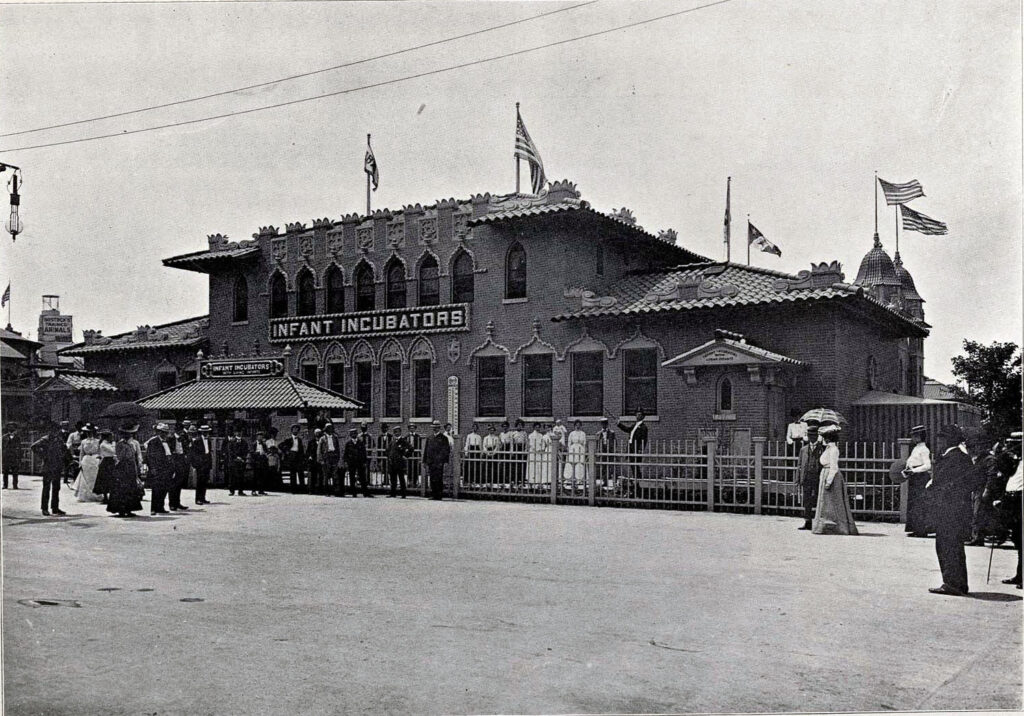
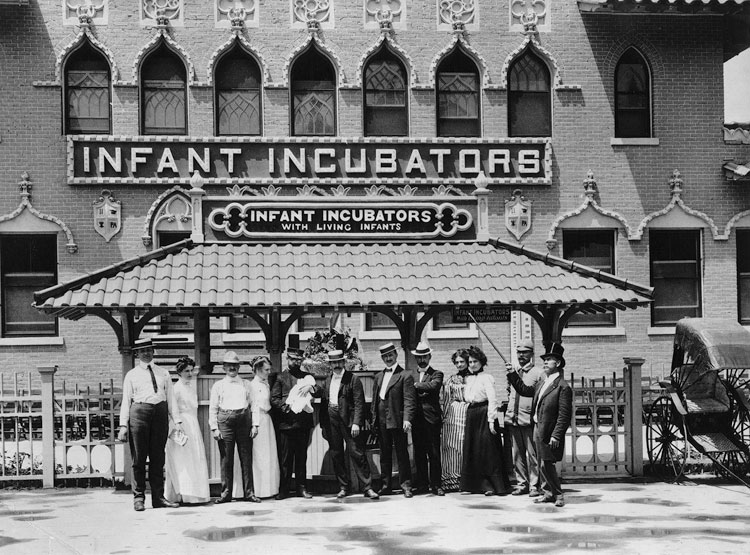
The exhibit received a great deal of national attention and was discussed in articles in Pediatrics, Cosmopolitan, and Scientific American, among others (links at bottom of page).
In a prominent position on the Midway, that part of the Pan-American Exposition almost wholly given over to the amusement of those frivolously inclined, is situated the building devoted to infant incubators. The building is of a decidedly picturesque construction. A “barker,” as is the case with all the shows of the Midway, promenades on the outside proclaiming in strident tones the especial merits of the incubator exhibit and drawing attention to the fact, that while it is conspicuous for the absence of any unpleasant features, at the same time it is of an eminently instructive and interesting nature and well calculated to provide many hints to mothers and to females generally in the successful rearing of weakly infants. — Pediatrics 12:414-419, 1901
The exhibit was in the news for other reasons as well.
On July 20, 1901, the Buffalo News reported that a baby had been prematurely born to Apache Indian Princess Ikishupaw and Chief Many Tales. Dr. Couney was called to the Indian Pavilion and had the infant placed in an exhibit incubator. The News reported that at 2 pounds, 2 ounces, it was the smallest baby ever born.
The twelve incubators used at this exhibition were made of metal and glass, manufactured by Kny-Sheerer in the US or Paul Altmann in Berlin (sources are unclear) under license from Dr. Alexandre Lion. Each infant was swaddled, a card above the incubator recorded details such as the baby’s birthdate, date of admission, and initials. The babies were fed and cleaned every two hours. At one time in August there were 18 babies being tended to, a few being doubled up in the same incubators. One of the nurses Couney recruited to care for babies at the exhibit was 26-year-old Annabelle Segner, who trained at Purdue Univesity in Indiana. Much like Mme. Louise Recht, Annabelle became a permanent member of Couney’s team, and in 1903, Martin and Annabelle were married.
After the exposition, the Children’s Hospital of Buffalo purchased the Lion incubators.
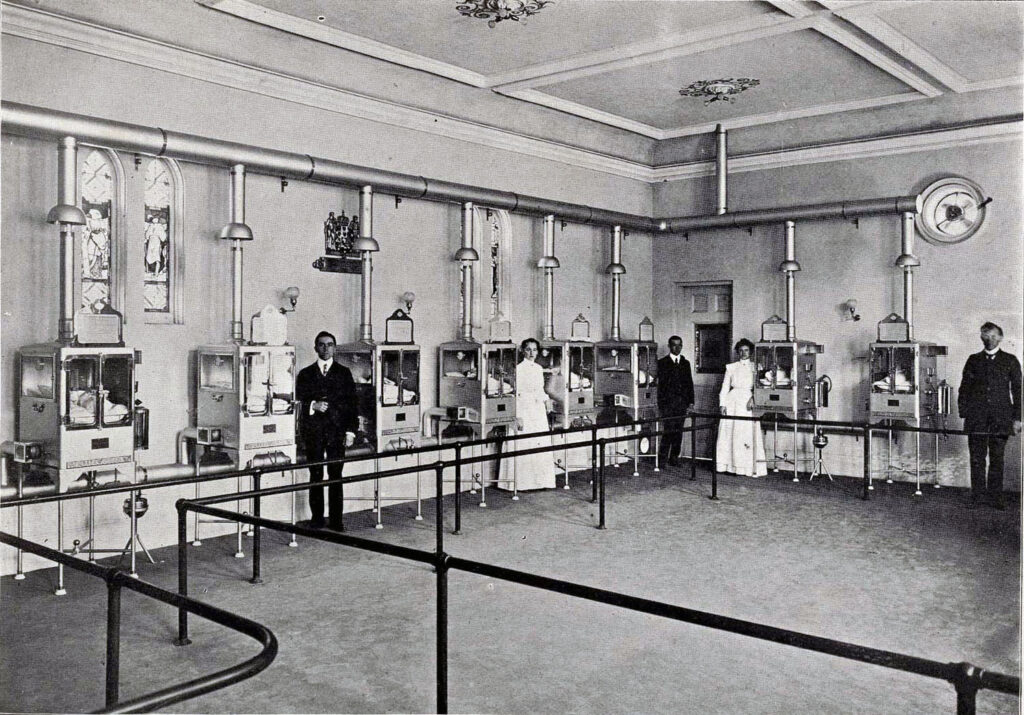

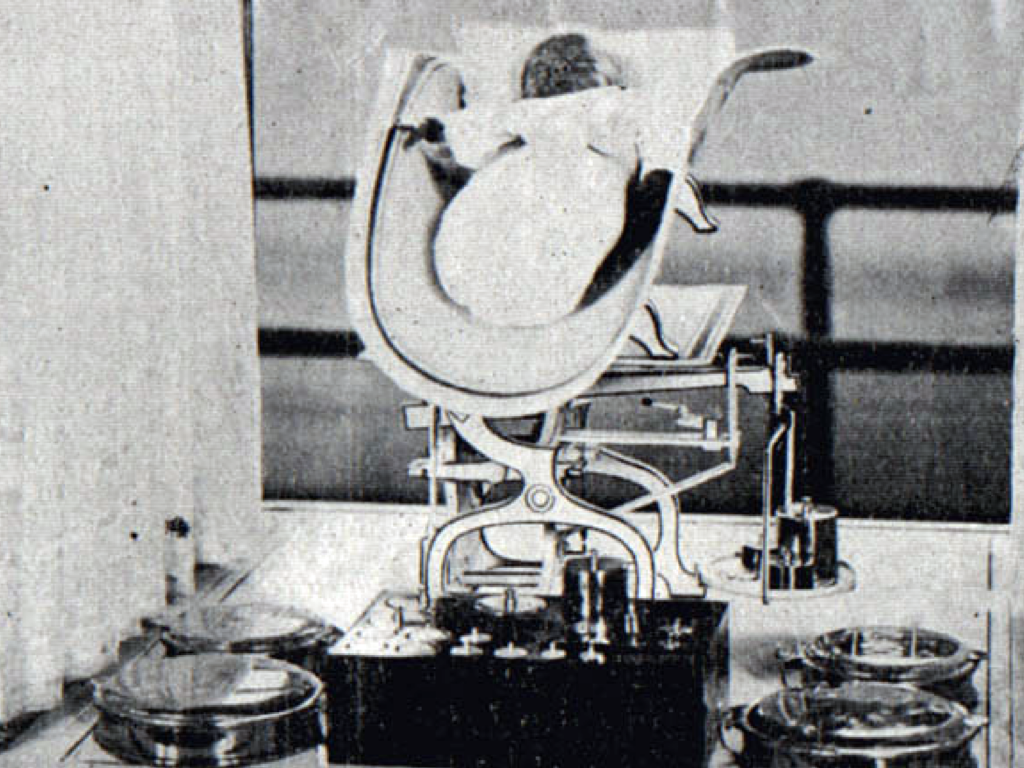
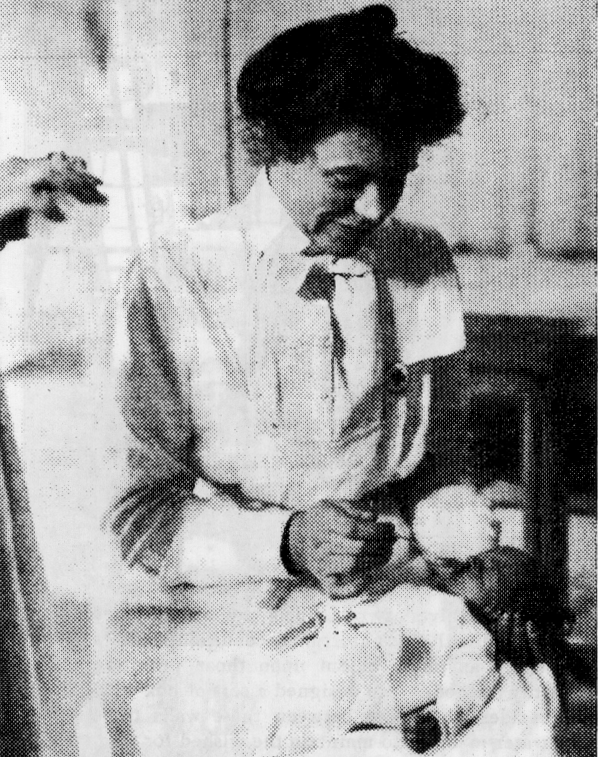

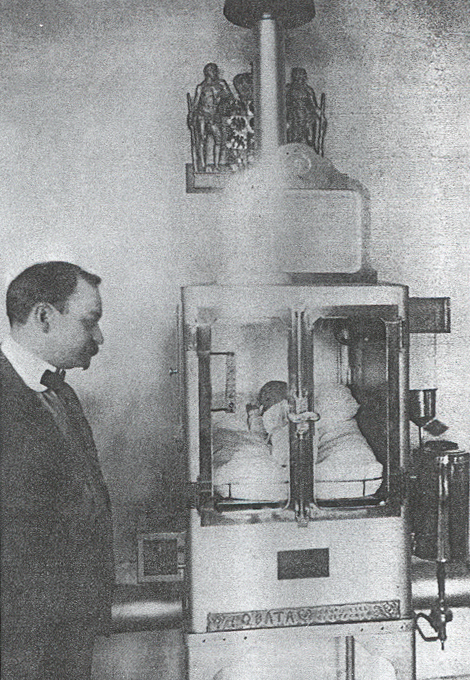
The incubator exhibit received extensive coverage in the local press.


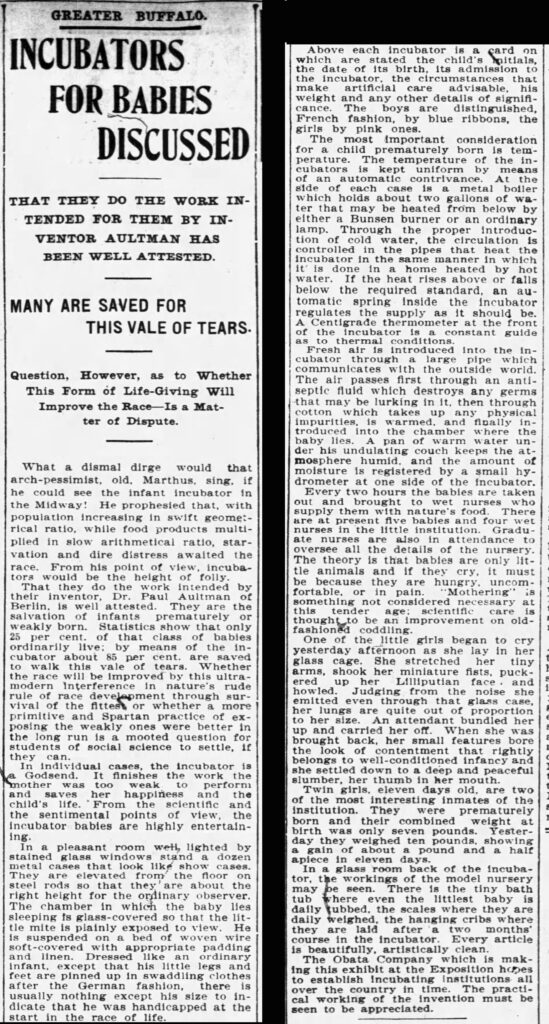
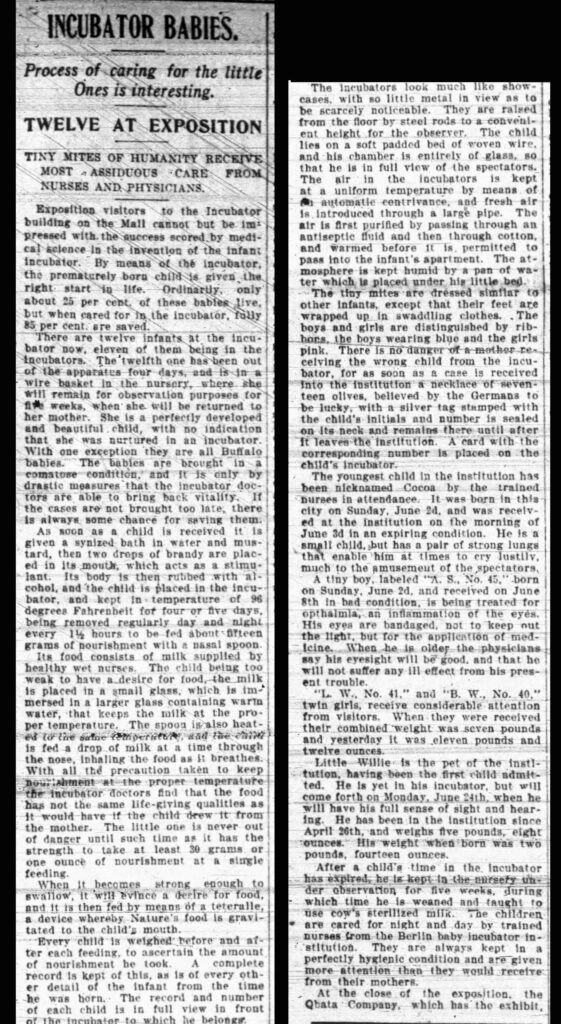
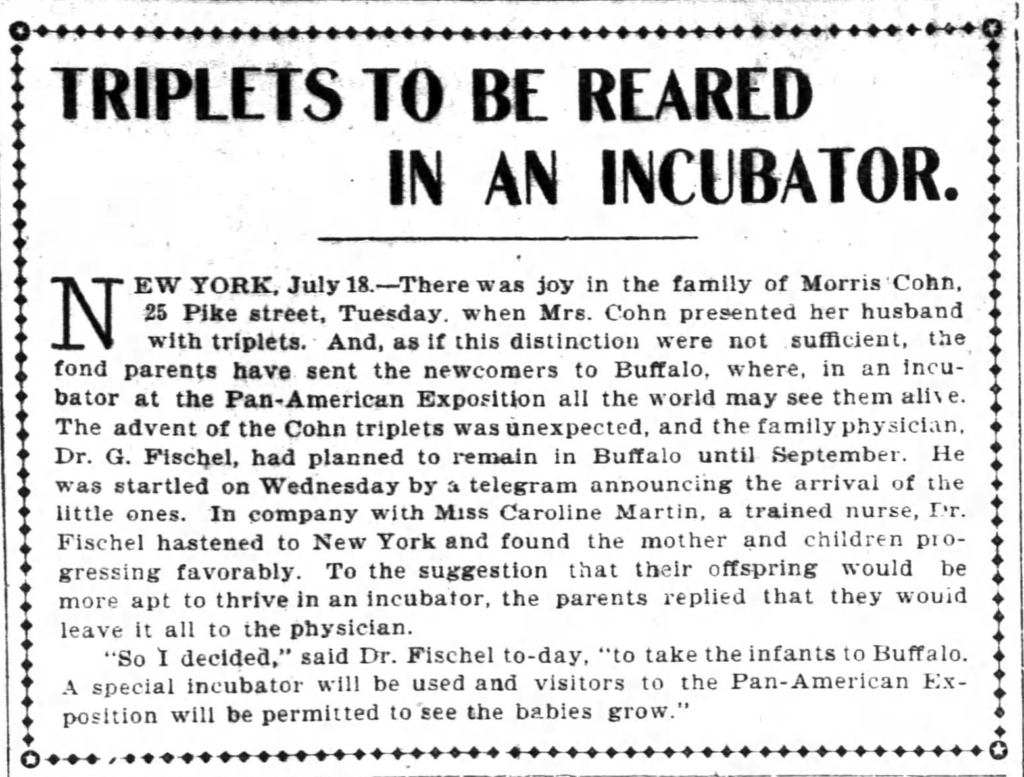

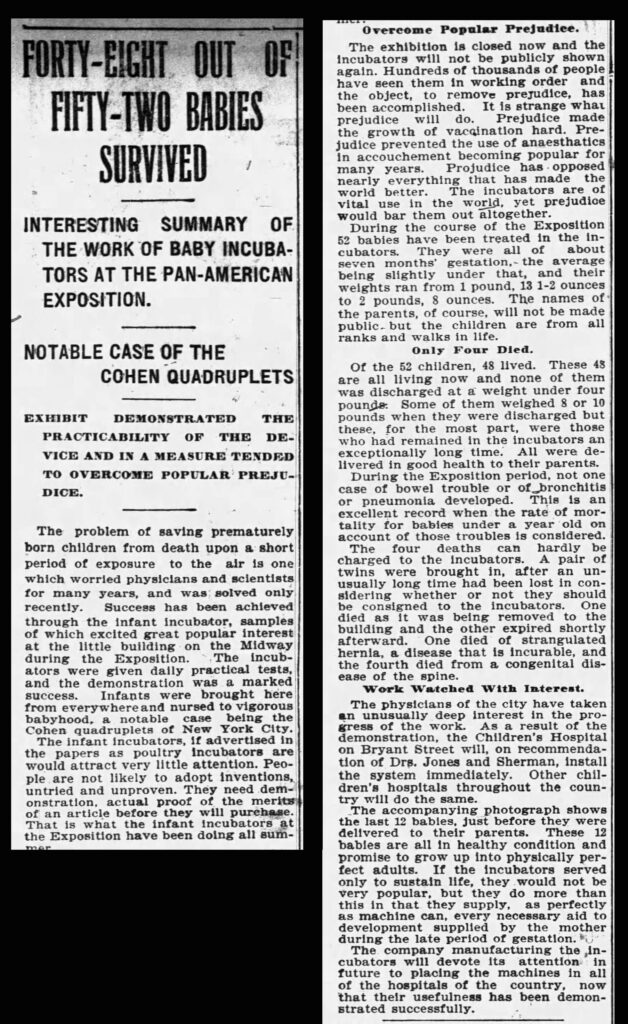
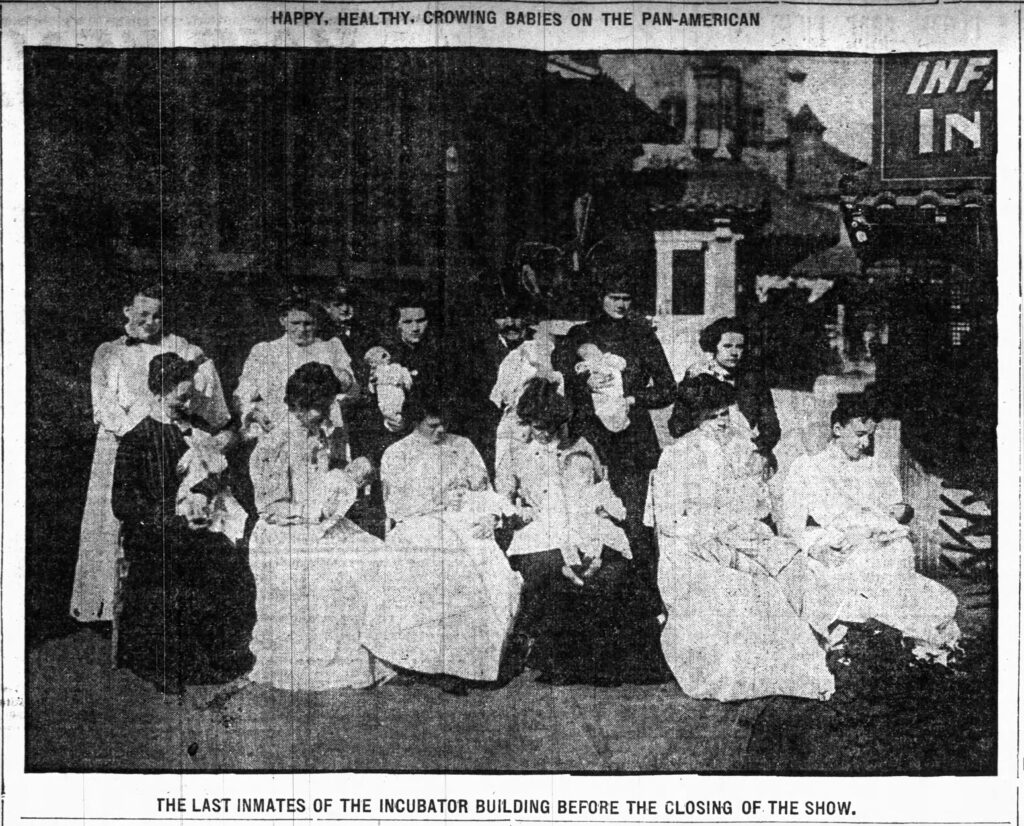
Dr. Couney did have occasional problems with overdue bills, landing him in court. This is one of several examples. Source: New York Times, November 7, 1901.
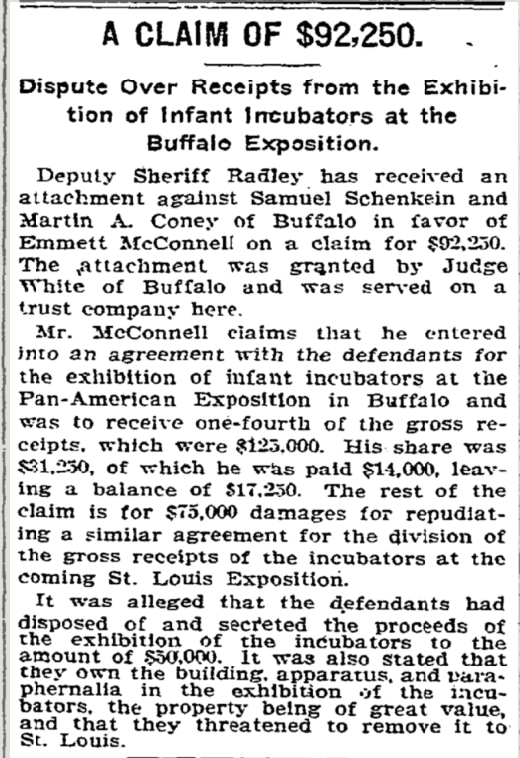
Below: The entry for the Incubator exhibit on the Midway Page in the official program for New York State Day.
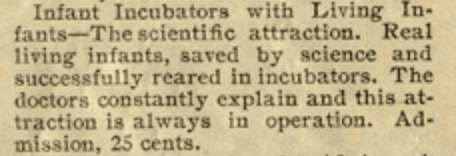
Below: A birds-eye view of the exposition, and an exposition map.
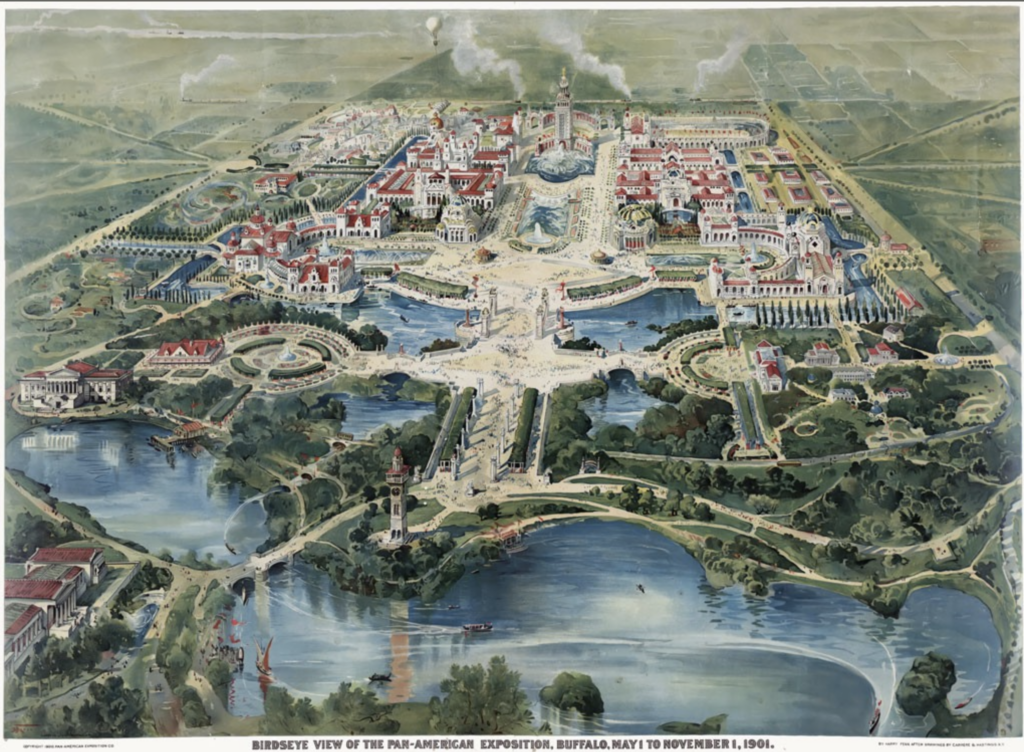
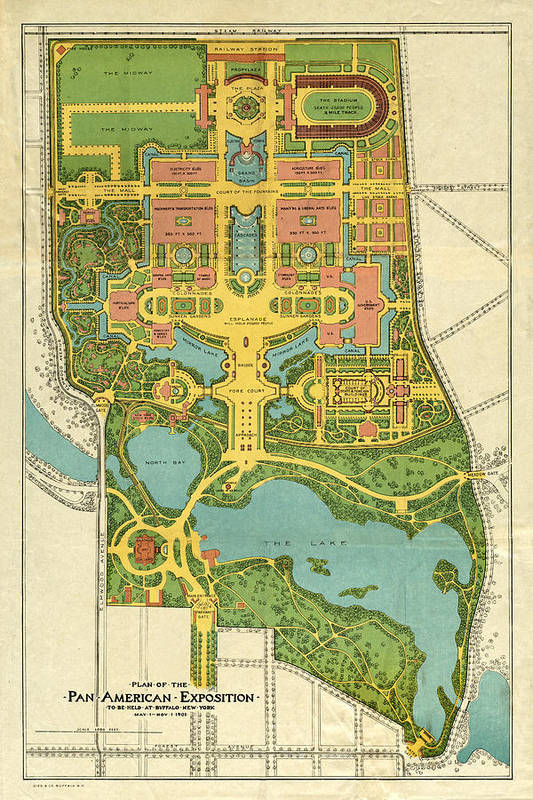
- “Exhibit of Infant Incubators at the Pan-American Exposition,” Pediatrics 12:414-419, 1901
- “Baby Incubators at the Pan-American Exposition,” Scientific American 85:68, August 3, 1901
- “Some Medical Aspects of the Pan-American Exposition,” from the Boston Medical and Surgical Journal, July 18 and 25, 1901, reprinted in the Buffalo Medical Journal August 1901
- “The Incubator Baby and Niagara Falls,” by Arthur Brisbane, Cosmopolitan 31:509-516, 1901
- Pan-American Exposition by Susan Eck (captured as a PDF)
- University of Buffalo (captured as a PDF)
- Pan-American International Exposition on the America’s Best History web site.
- Pan-American Exposition on WIkipedia.
Martin Arthur Couney
- Short biography of Martin Couney
- Martin Couney, Wikipedia
- Martin Couney’s Obituary, from The New York Times, March 2, 1950.
Martin Couney Exhibits in World’s Fairs and National Expositions
- Victorian Era Exhibition at Earl’s Court, 1897
- Trans-Mississippi Exposition, Omaha, 1898
- Pan-American Exposition, Buffalo, 1901
- Lewis and Clark Exposition, Portland, 1905
- Panama-Pacific International Exposition San Francisco, 1915
- Century of Progress International Exposition, Chicago, 1933-34
- New York World’s Fair, New York, 1939-1940
Martin Couney Sideshows in Amusement Parks
- Coney Island Sideshow at Luna Park
- Coney Island Sideshow at Dreamland
- Lakeside Amusement Park, Denver.
- Luna Park, Pittsburgh
- Wonderland – Minneapolis and St. Paul
- Wonderland – Revere Beach
- Boardwalk – Atlantic City
- White City Amusement Park – Chicago
- White City Amusement Park, Indianapolis, Indiana
- White City Amusement Park, Cleveland, Ohio
Recent Books
- The Strange Case of Dr. Couney, by Dawn Raffel, Blue Rider Press, ISBN 0399175741
- Miracle at Coney Island, by Claire Prentice (Kindle or audiobook)
General Articles
General articles about Martin Couney and his exhibits are linked below. Additional links may be found in specific posts about his participation in expositions or sideshows.
Keep in mind that many of these were written before the full facts about Martin Couney’s background became known, or have not incorporated that new information, so they include information from his self-invented background legend.
- Incubator Baby Sideshows, by William Silverman, from Pediatrics.
- Postscript to Incubator-Baby Sideshows, by William. Silverman, from Pediatrics
- Martin Couney’s Story Revisited, by William Silverman, from Pediatrics
- Martin Couney’s Obituary, from The New York Times, March 2, 1950.
- A Patron of the Premies, by A. J. Liebling, from The New Yorker
- The Coney Island Baby Laboratory, by Gary R. Brown, from American Heritage Invention and Technology Magazine
- American Characters: Martin Couney, by Richard Snow, from American Heritage Magazine
- The Man Who Ran a Carnival Attraction… by Claire Prentice, from Smithsonian Magazine
- Life under Glass, audio documentary by Claire Prentice, from the BBC
- Martin Couney and Incubator Exhibits from 1896 to 1943, from the Embryo Project
- The Incubator Baby and Niagara Falls, by Arthur Brisbane, from The Cosmopolitan
- Babies on Display, from NPR
- Beginner’s Luck, from Family Circle Magazine 1993
- Coney Island’s Incubator Babies, by Rebecca Rego Barry, from JSTOR Daily
- The Infantorium, by Katie Shornton, from 99% Invisible
- How One Man Saved a Generation of Premature Babies, from BBC News
- Baby Incubators: From Boardwalk Sideshow to Medical Marvel, by Erin Blackmore, from History.Com
- Babies in Sideshows, by Julie Andreson, from Engines of our Ingenuity
- Dr. Martin Couney, from Coney Island History Project
- “The Use of Incubators for Infants,” The Lancet, May 29, 1897.
- “The Victorian Era Exhibition at Earl’s Court,” The Lancet, July 17, 1897.
- Incubator Baby Shows: A Medical and Social Frontier, by Hannah Lieberman, from The History Teacher 35.1, November, 2001.
- The Child Hatchery, from City Pages.
Last Updated on 04/30/23